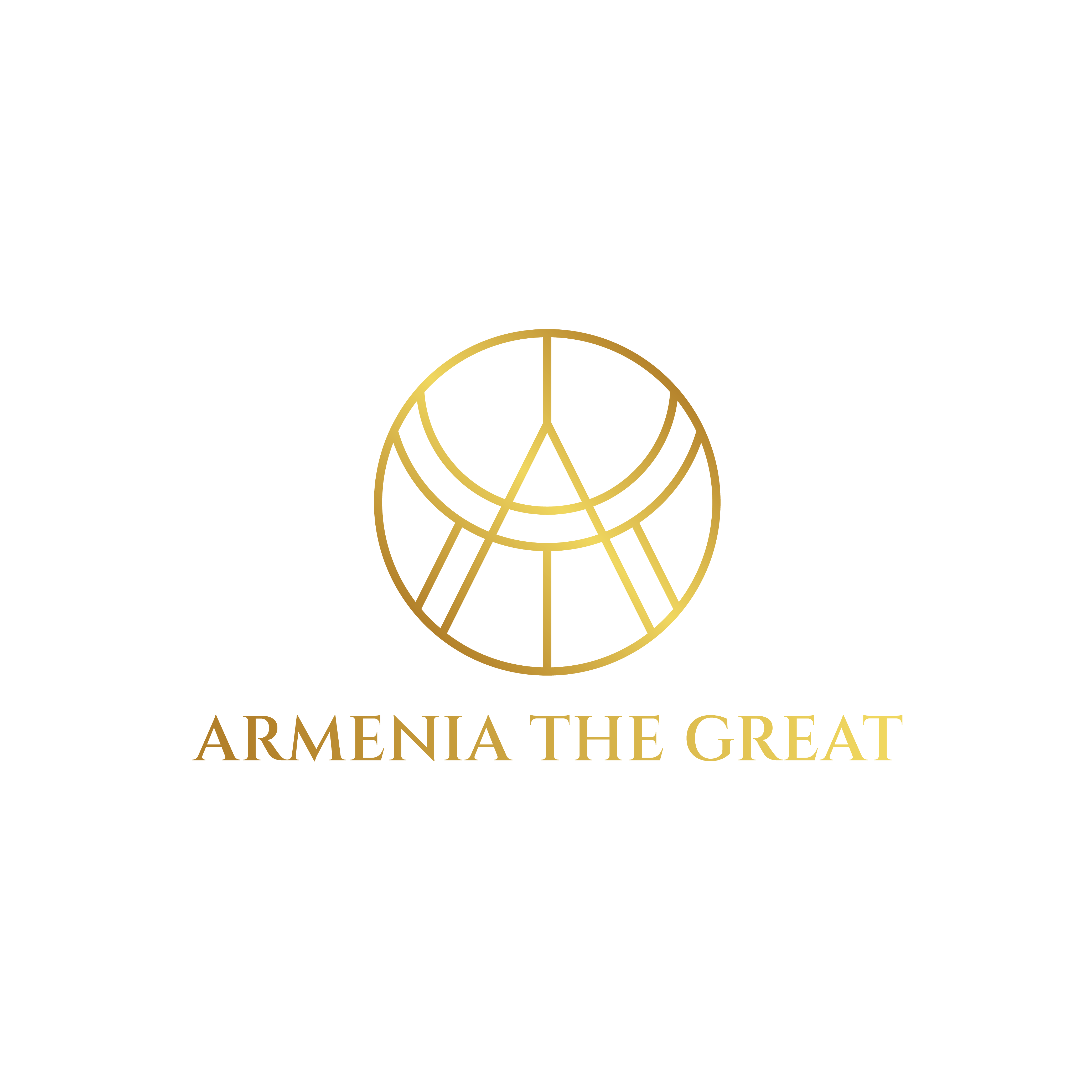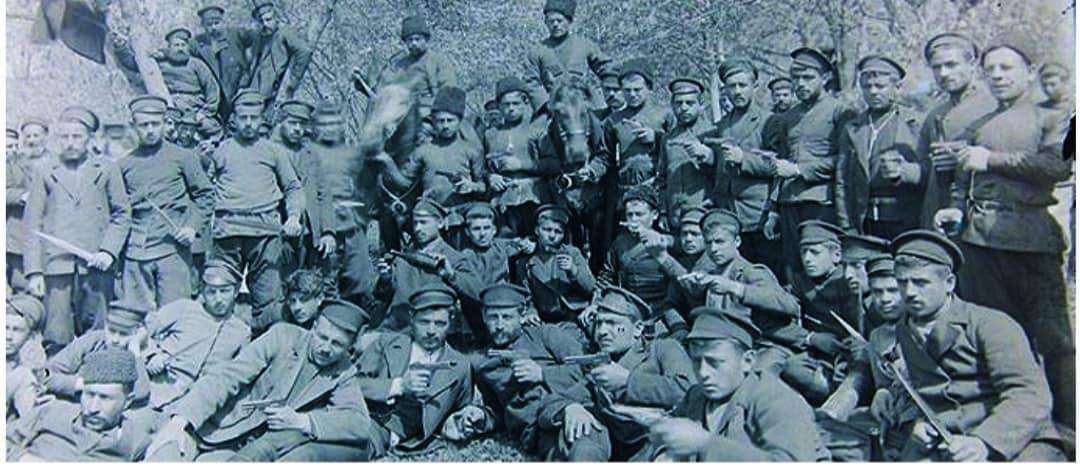After the Brest-Litovsk Treaty of 1918 between Russia and Germany, the Bolsheviks ceded large territories in eastern Europe to the Germans, and to the Turks – all the lands of Western Armenia (occupied by Russia during the First World War in the companies of 1915-17), and the Kars region, which was occupied by the Russian empire even before the war.
Even though the Transcaucasian government—the Transcaucasian Seim—that oversaw Azerbaijan, Armenia, and Georgia had already declared independence from Russia and refused to accept the Brest-Litovsk Treaty, the Turks nevertheless advanced and started to occupy these territories.
In June 1918, during the peace negotiations in Batumi, the Turks decided to take it a step further. They demanded not only the lands that should not have been transferred to them under the Brest-Litovsk Treaty—Batum, Akhaltskha, Akhalkalak, Alexandropol, etc.—but also lands that had been occupied with the Germans’ approval.
It was too late for the Germans to sway the Turks. In addition, Germany benefited from offering the Turks Armenian and Georgian territories as bribes because they were necessary for the Turks to maintain their assault on Baku.
Following the Peace of Batumi, the newly formed Transcaucasian republics of Armenia and Georgia were threatened with Turkish invasion. The victories at Sardarapat and Bash-Aparan provided Armenia with the solution to this problem. Turkish command shifted their focus from conquering Yerevan to capturing Baku after realizing that annihilating Armenia would be an impractical and unattainable goal. This was due to the Baku Council’s control over the eastern Transcaucasia, which barred the Germans and Turks from accessing Baku oil and prevented the Azerbaijani leadership from relocating from Ganja to Baku.
In terms of geography, Georgia had the upper hand; the invasion of Turkey did not pose an imminent threat to Georgia’s complete destruction, and the country was further away from the main routes that Turkey took to reach Baku. Thus, in order to safeguard itself, Georgia allowed the Turks to capture Batum, Akhaltskha, and Akhalkalak. And Georgia made a similar promise not to aid Armenia. This was to the Turks’ liking. As a result of these events, the Georgians were able to secure the entrance of German troops into their country, protecting it from the Turks’ push beyond the Batumi Peace line (to Borjomi, Tsalka, Poti, etc.).
Withdrawing its forces (under the command of General Archevanidze) north of the Trialeti ridge to Borjomi and east of Tsalka, Georgia handed over the region to the Turks, leaving Javakhk vulnerable to Turkish occupation and eventual destruction.
The Georgians of Akhaltskha and Akhalkalak were ensnared in the Turkish occupation zone alongside the Armenians. In a message sent to Tbilisi, the National Council of Georgians in Akhaltsikhe requested that the city not be relinquished. “They will give their lives, but will make Akhaltsikhe a grave for the Turkish army” was their stated goal, according to the newspaper “Sharzhum” in Akhaltskha in 1918 (number 32), as well as Z. Didmamishvili’s diary. But the Georgian soldiers withdrew, and the Armenian majority and their armies continued to defend the Javakhk Georgians.
The resistance to the Turks in Akhaltskha was well-organized and led by Zori Zoryan (ARF), the mayor of Akhaltskha, and Khachatur Ter Karapetyan, the commander of the Akhaltsikhe Armenian volunteer regiment. The local Ahiska Turks, also known as Meskhetian Turks, were put down when they attacked Armenians and Georgians. In addition, the Armenians launched multiple operations to free villages in Georgia and Armenia from Turkish forces.
The Armenian and Georgian population in Akhaltskha were spared the massacre, spared deportation, and the Turks promised to leave them alone because of their successful resistance. This promise was kept by them. No one forced the Armenians and Georgians of Akhaltskha to flee; they were saved. The people of Akhaltsikhe are well-versed in these events, but contemporary Georgians would rather not bring up the subject of this conflict.
Because of poor leadership, the resistance movement in Akhalkalak was less effective in its fight against the Turks. It all started when General Andranik emerged from Etchmiadzin with his corps to protect Akhalkalak. However, on his way there, he decided to shift his focus to Lori in order to better engage the Turkish army.
The Armenian National Council appointed Colonel Arakelov, but he failed to adequately organize the Akhalkalaki district. The Turks were unable to maintain their position despite the fact that Akhalkalak engaged them in multiple fierce battles, especially close to the village of Satha. Under the protection of the Armenian self-defense forces, the majority of the population made a well-coordinated and relatively casualty-free retreat to Bakuriani and Tsalka (as these regions were retained by Georgia as a result of the Treaty of Batumi), where they stayed from May 1918 until winter.
The Turks ambushed the populace and committed complete genocide in multiple settlements (such as Khorenia). However, the Armenian self-defense groups were generally successful in providing organized cover for the Armenian and Georgian populations who were retreating.
The Turkish invasion reduced the population of the Akhalkalaki district by about 40,000 people, according to official statistics from pre-revolutionary and Soviet censuses. Epidemic, famine, and pogrom victims are all part of this category.
However, as a result of the Armenian self-defense of the region, there was neither a total massacre in Javakhk nor the deportation of Armenians to the deserts of Syria. The Armenian and Georgian population for the most part escaped: they either remained in their villages (as in Akhaltsikhe district) or were able to leave in an organized manner (as in Akhalkalaki district).

